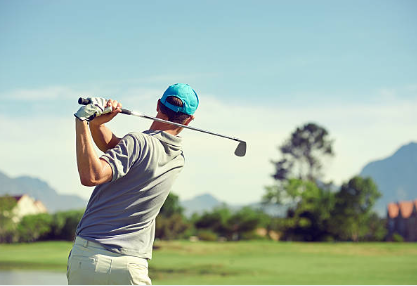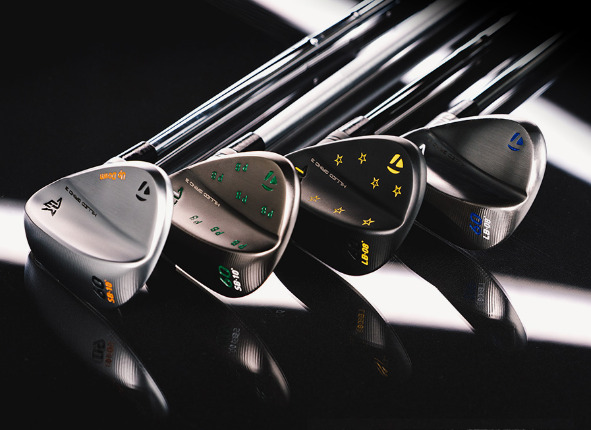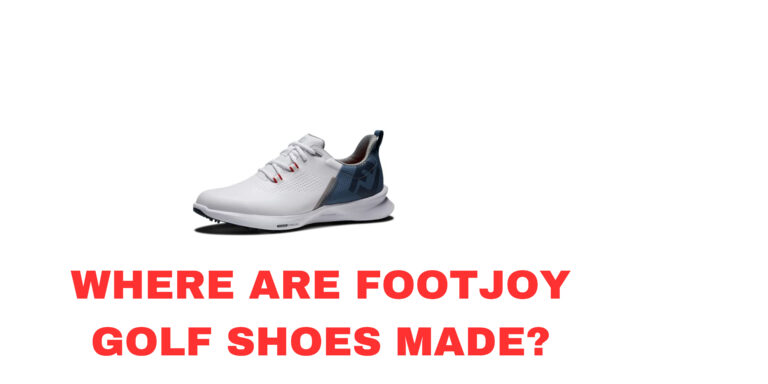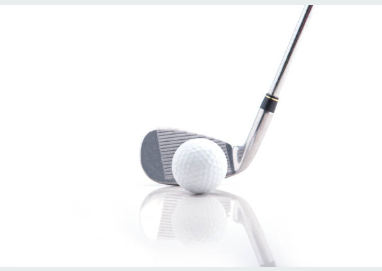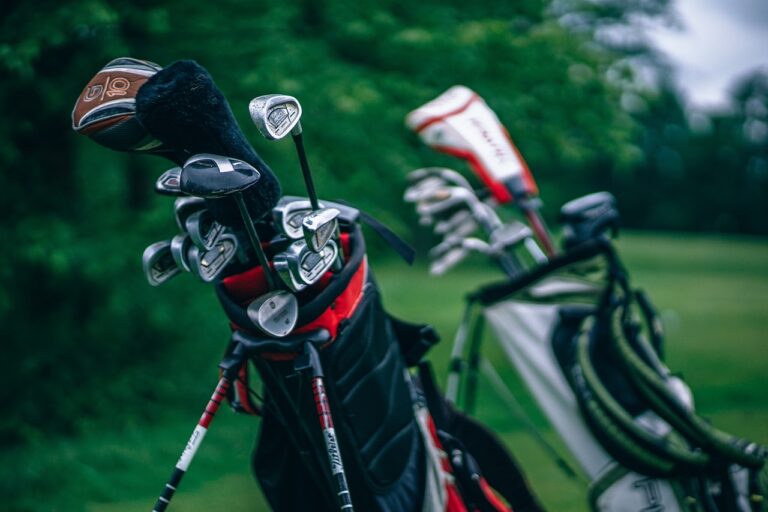Golf draw VS Fade.
Welcome to my comparison post of the golf draw vs fade where we are going to be comparing the two of the most important ball flights in the game of golf.
As a golf enthusiast, I have always been fascinated by the different ball flights that can be achieved by manipulating the clubface at impact. Two of the most commonly discussed ball flights are the draw and the fade.
These shots are achieved by intentionally altering the spin of the ball, causing it to curve in a specific direction.
A draw is a shot that curves from right to left (for a right-handed golfer), while a fade is a shot that curves from left to right. The difference between these shots lies in the direction that the clubface is pointing at impact.
To hit a draw, the clubface must be closed to the target line at impact, while a fade requires an open clubface. These shots can be used to great effect on the golf course, allowing golfers to navigate around obstacles or set up approach shots to the green.
Understanding the differences between the draw and the fade is an important part of any golfer’s skillset. By mastering these shots, golfers can add versatility and creativity to their game, enabling them to tackle even the most challenging courses with confidence.
In this article, we will explore the mechanics of the draw and the fade, as well as the situations in which each shot is most effective.
Understanding Golf Shots: Golf Draw VS Fade.

What is a Golf Draw?
As a golfer, you might have heard the term “draw” being used to describe a shot.
A draw shot is a shot that curves from right to left for right-handed golfers and from left to right for left-handed golfers. It is a shot that starts right off the target and then curves back to the left.
A draw shot is often used to add distance to your shots, as the curve of the shot can help the ball roll further down the fairway. It can also be used to avoid obstacles on the course, such as trees or bunkers.
What is a Golf Fade?
On the other hand, a fade shot is a shot that curves from left to right for right-handed golfers and from right to left for left-handed golfers. It is a shot that starts left of the target and then curves back to the right.
A fade shot is often used to control the ball flight and accuracy. It can also be used to avoid obstacles on the course, such as water hazards or out-of-bounds areas.
How to Hit a Draw.
I have covered extensively how to hit a golf draw in a previous post Here. However, here is a summary of how to hit a draw for the sake of this post.
Grip.
To hit a draw, you need to adopt a stronger grip, which means turning both hands slightly to the right (for right-handed golfers) on the club. This grip will help you close the clubface at impact, promoting the right-to-left curve.
Clubface.
Aim the clubface slightly to the right of your target, but not as far right as you want the ball to start. This will help create the appropriate spin for a draw.
Swing Path.
Swing the club from inside to outside. This means your club should approach the ball from the inside of the target line and then continue on an outward path after impact. This swing path will help generate the right-to-left spin necessary for a draw.
How to Hit a Fade.
Just like with the fade, there is an article I did earlier that covered all about how to hot a perfect fade Here, but for the sake of this post, here is a summarized version of it.
Grip.
For a fade, use a weaker grip, which means turning both hands slightly to the left (for right-handed golfers) on the club. This grip will help you open the clubface at impact, promoting the left-to-right curve.
Clubface.
Aim the clubface slightly to the left of your target, but not as far left as you want the ball to start. This will help create the appropriate spin for a fade.
Swing Path.
Swing the club from outside to inside. This means your club should approach the ball from the outside of the target line and then continue on an inward path after impact. This swing path will help generate the left-to-right spin necessary for a fade.
Draw vs Fade: Advantages and Disadvantages.
Understanding the advantages and disadvantages of both draw and fade shots can help you decide which shot to use in various situations on the golf course. Here’s a breakdown of the pros and cons of each shot type:
Draw
Advantages:
- Distance: Draws generally travel farther than fades due to the reduced backspin and increased roll. This additional distance can be advantageous when trying to reach a longer par-4 or par-5 green in fewer strokes.
- Navigating dogleg holes: Draw shots can be helpful in navigating dogleg holes that curve from right to left (for right-handed golfers) or left to right (for left-handed golfers). A well-executed draw can follow the shape of the hole, setting up an easier approach shot.
Disadvantages:
- Control: Draws can be more challenging to control, as they can easily turn into hooks if not executed correctly. A hook has a more pronounced curve and can lead to missed fairways or hazards.
- Wind effects: Draw shots can be affected more by wind, especially when it’s blowing from left to right (for right-handed golfers) or right to left (for left-handed golfers). This wind can exaggerate the curve of the shot and make it more difficult to control.
Fade.
Advantages:
- Control: Fades offer better control and are less likely to turn into slices when executed correctly. A controlled fade is more predictable than a draw, making it easier to place the ball accurately on the fairway or green.
- Navigating dogleg holes: Fades can be beneficial when playing dogleg holes that curve from left to right (for right-handed golfers) or right to left (for left-handed golfers). A well-executed fade can follow the shape of the hole, setting up an easier approach shot.
Disadvantages:
- Distance: Fades generally travel shorter distances than draws due to the increased backspin and reduced roll. This loss of distance might make it more challenging to reach longer holes in fewer strokes.
- Wind effects: Fades can be affected more by wind, especially when it’s blowing from right to left (for right-handed golfers) or left to right (for left-handed golfers). This wind can exaggerate the curve of the shot and make it more difficult to control.
Choosing the Right Shot for Your Game.

Analyzing Your Natural Swing
Every golfer has a natural swing that produces a specific ball flight. Understanding your natural swing tendencies can help you determine whether a draw or fade is better suited for your game.
If your natural shot shape is a draw, focus on refining that shot. Conversely, if your natural shot shape is a fade, work on perfecting it.
Course Management.
Consider the layout of the course you’re playing and the specific holes you’ll encounter. Some holes may require a draw to navigate a dogleg or avoid hazards, while others may require a fade.
Understanding when to use each shot can help improve your course management and lower your scores.
Drills to Improve Your Draw and Fade.
Draw Drills.
- Alignment Stick Drill: Place an alignment stick on the ground, pointing slightly to the right of your target. Practice swinging along the stick’s path to encourage an inside-to-outside swing path.
- Clubhead Cover Drill: Place a clubhead cover approximately 12 inches behind the ball and slightly inside the target line. Practice swinging without hitting the cover to promote an inside-to-outside swing path.
Fade Drills.
- Alignment Stick Drill: Place an alignment stick on the ground, pointing slightly to the left of your target. Practice swinging along the stick’s path to encourage an outside-to-inside swing path.
- Clubhead Cover Drill: Place a clubhead cover approximately 12 inches behind the ball and slightly outside the target line. Practice swinging without hitting the cover to promote an outside-to-inside swing path.
FAQs
Is a draw or fade better for beginners?
It’s best for beginners to focus on their natural shot shape rather than trying to force a specific shot. As they gain experience and improve their skills, they can start experimenting with different shot shapes.
Do draw and fade shots affect putting?
Draws and fades do not directly impact putting, as putting requires a different set of skills and techniques.
Can I use a specific club to help me hit a draw or fade?
While certain clubs may make it easier to hit a draw or fade, it’s essential to develop proper technique and understand the fundamentals of each shot.
How can I avoid turning my draw into a hook or my fade into a slice?
Focus on maintaining a balanced, controlled swing and avoid over-rotating your hands during impact. Consistent practice and proper technique will help you prevent hooks and slices.
Is it necessary to learn both draw and fade shots to be a good golfer?
While it’s not necessary to master both draw and fade shots to be a good golfer, having the ability to execute both can significantly enhance your game. Being able to shape your shots based on course conditions and hole layout provides you with more options and better course management, ultimately leading to lower scores.
Conclusion.
Understanding the differences between a draw and a fade, as well as how to execute each shot effectively, can significantly improve your golf game. By analyzing your natural swing tendencies and practicing specific drills, you can develop both shot shapes and use them strategically on the course. Remember, golf is a game of skill, and mastering these shots will only enhance your performance.

